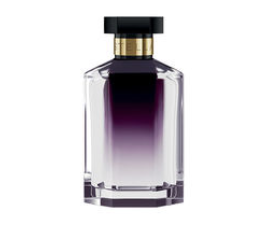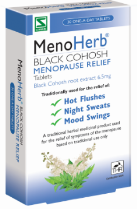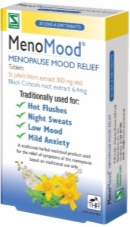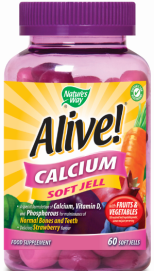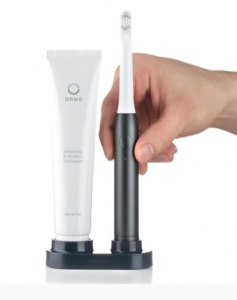Author Archives: admin
New style bargains for your summer wardrobe
What’s hot in perfume now!
Never buy perfume in a department store again – as you will definitely be paying over the odds for it.
Here we have some examples of bargains available online at Fragrance Direct.
In addition on Monday17th from 9am until Tuesday 18th there is a flash sale of 10% off all orders over £20 with code FLASHTEN
Red wine molecule causes a drop in blood pressure
A new treatment for high blood pressure could be on the horizon after British Heart Foundation-funded scientists today revealed how a molecule found in red wine causes drops in blood pressure. The study, published in the journal Circulation, sheds light on how the compound could help scientists combat heart and circulatory diseases.
Resveratrol is a compound produced by the skins of certain fruits in self defence against insects, bacteria and fungi. It is best known for its presence in grapes and red wine. The compound has been touted as an elixir capable of combating several diseases including cancer, dementia and heart and circulatory diseases. However, despite exciting findings of benefits in cell and animal studies, so far scientists have been mostly unable to effectively translate these findings into treatments for human disease. In addition, the exact mechanisms behind resveratrol’s effects have not been understood.
Researchers from King’s College London gave mice with induced high blood pressure 320mg/kg of resveratrol in their diet for 15 days. The blood pressure of mice fed resveratrol in their diet dropped by around 20mmHg compared to mice fed a normal diet.
The researchers showed that resveratrol caused the blood vessels of the mice to relax, and blood pressure to drop, by oxidising a protein called PKG1a in the blood vessel wall. They then showed that resveratrol works in the same way in smooth muscle cells from human blood vessels.
According to the researchers, no current blood pressure lowering medications target this pathway and the findings could lead to the development of new drugs. The findings have also revealed that resveratrol, previously labelled an antioxidant, acts as an oxidant to lower blood pressure.
The team have suggested that the blood-pressure lowering effects of resveratrol might actually be amplified in people with heart and circulatory disease. In order to oxidise PKG1a, resveratrol has to be activated by free radicals first, which are found at higher concentrations in heart patients.
The findings do not mean the public should start drinking more red wine. For a human to consume the same doses of resveratrol used in the study, they would need to drink around 1,000 bottles of red wine a day. The researchers explain that such high doses of resveratrol were needed because in its current form resveratrol does not dissolve well and is broken down by the body before it can reach its target in the blood vessel wall.
Future drug developments may rely on altering the chemical structure of resveratrol to make it easier to dissolve and more resistant to breakdown, to ensure more of the compound reaches the target cells. Scientists may also develop entirely new drugs, which mimic the effects of resveratrol.
Dr Joseph Burgoyne, Senior Lecturer in Cardiovascular Sciences at King’s College London who led the study said:
“We’re slowly realising that oxidants aren’t always the villain. Our research shows that a molecule once deemed an antioxidant exerts its beneficial effects through oxidation. We think that many other so-called ‘antioxidants’ might also work in this way.
“Our work could lay the foundations for chemically altering resveratrol to improve its delivery to the body, or designing new, more potent drugs which use the same pathway. In the future, we could have a whole new class of blood pressure drugs.”
Professor Metin Avkiran, Associate Medical Director at the British Heart Foundation said:
“Unfortunately, this isn’t the all clear to open a bottle of merlot. To get the human equivalent dose of resveratrol used here, you’d need to drink an impossible amount of red wine every day.
“This study reveals the surprising way in which resveratrol works and opens up the possibility of new blood pressure drugs which work in a similar way. The findings bring us a step closer to tackling this ‘silent killer’ which puts people at risk of having a devastating stroke or heart attack.
“Although you can buy resveratrol supplements, the best way to keep your blood pressure under control is through a healthy lifestyle, a balanced diet and taking any medicines prescribed by your doctor.”
Background facts:
There are around 14.4 million adults in the UK with high blood pressure, with an estimated 6-8 million who are undiagnosed or uncontrolled. High blood pressure, or hypertension, is a major risk factor for heart and circulatory diseases including strokes and heart attacks.
It’s thought that significant numbers of people who are prescribed medications for high blood pressure do not take them.
During May Measurement Month, the BHF is encouraging the public to get to know their numbers. A normal blood pressure is less than 140/90mmHg. For more information, please visit our website.
To request interviews or for more information please contact the BHF press office by emailing newsdesk@bhf.org.uk or calling 020 7554 0164. (07764 290 381 – out of hours).
About the British Heart Foundation:
One in four of us in the UK and one in three globally die from heart and circulatory diseases. That’s why the British Heart Foundation funds world‐leading research into their causes, prevention, treatment and cure. Advances from our research have saved and improved millions of lives, but heart diseases, stroke, vascular dementia and their risk factors such as diabetes still cause heartbreak on every street. With the public’s support, our funding will drive the new discoveries to end that heartbreak. Find out more at bhf.org.uk
New romance novel from Lisa Hobman
When writer Lisa Hobman left England in 2012 and relocated to Scotland, she instantly knew her growing writing career would be surrounded with boundless inspiration. And it’s paid off with gusto, with Hobman achieving bestseller status on both sides of the Atlantic.
Hobman’s hallmark for feel-good, humanity-rich romance plays out on every page of her new novel, ‘A Summer of New Beginnings’. Meet a travel writer, an assignment to cycle Scotland’s North Coast 500 route – and a series of life-changing discoveries that will set readers on their own course for adventure.
Synopsis: Meet Zara Bailey, a travel writer paid to cover some of the globe’s most luxurious locations. Jetting from wooden huts on stilts in turquoise seas to boutique hotels with roaring fires to 7* penthouse suites with panoramic views of the world’s most glamorous cities… Zara knows hers is the definition of a dream job!
So she is seriously shocked to receive her next assignment; Scotland’s Northcoast 500 route. By bicycle. Sleeping in a tent so basic it can’t remotely be dressed up as glamping!
But this could be just the distraction the recently heartbroken Zara needs. No men, no romance, just the breathtakingly rugged Highland scenery. Until she meets croft owner Lachlan Grant, and his black and white Border Collie Bess, that is…
“This story is incredibly uplifting, and heavily inspired by the beauty and mystery of Scotland,” explains the author, who didn’t start writing until her forties. “I admit I haven’t cycled the North Coast 500 route (yet!!), but every location and setting in the book is included because it’s somewhere my family has visited and fallen in love with. If you love Scotland, or have just dreamed of visiting, this is the book for you.”
Continuing, “It’s also perfect for those of us who love a story that sends the heartstrings tugging and leaves us feeling empowered and positive about the power of love. Read it on the beach, out on your deck or inside on a rainy day – you’ll be singing The Proclaimer’s hit in your head long after you turn the last page!”
‘A Summer of New Beginnings’, from Aria Fiction, is available now:
About the author, in her own words:
Back in 2014 I had the huge honour of being shortlisted in the Romantic Novelists Association, Romance Novel of the Year – Contemporary Romance Category (RoNA), for my debut novel Bridge Over the Atlantic. This book was re-published in 2017 when I signed a four book deal with Aria Fiction. The new title is A Seaside Escape and the new version has been very well received.
I’m a happily married mum of one with two energetic dogs who make cameo appearances in some of my books. I love writing and creating new characters and now have the pleasure of writing almost full time.
I am also a singer and have played a number of venues including The Highland Festival as well as appearing in ‘Stars in Their Eyes’ in 1996/7 as Alanis Morissette.
https://m.youtube.com/watch?feature=youtu.be&v=jFfewpvPU0c
In 2012 my family and I relocated from England to our favourite place in the world, Scotland, and we are now happily ensconced in village life. This stunning country was the inspiration for my writing career and so it’s only right that it features in all of my books.
Writing has always been something I’ve enjoyed, although in the past it has centered on poetry and song lyrics; some of which appear in my stories. But to now be a published author is a real dream come true. I have now had two publishing contracts and have fourteen published titles under my belt.
I’ve recently completed my four book contract with UK publisher Aria Fiction – an imprint of award winning Head of Zeus and I have many more books in the pipeline! You can follow me on Facebook, Instagram and Twitter.
I have a lifelong condition called Myasthenia Gravis and so I’m proud of what I have achieved while managing the symptoms, and I hope that others with the condition can be inspired to follow their dreams.
Fruit and vegetables lower risk of depression – new research reveals
Increasing the amount of fruit and vegetables people eat lowers their risk of clinical depression, new research has found.
The study discovered that eating, for example, four extra portions of fruit and vegetables a day can boost people’s mental health to such an extent that it can offset half the negative psychological impact of divorce and a quarter of the psychological damage of unemployment.
Other studies have used people’s subjective responses to surveys to discover a link between eating fruit and vegetables with improved wellbeing.
But this is one of only a few studies that has found objective evidence of the association between fruit and vegetables and psychological health.
Redzo Mujcic, of Warwick Business School, author of the paper alongside Andrew Oswald, of the University of Warwick, said: “This is an interesting finding and makes the case for an empirical link between fruit and vegetables and improved mental wellbeing more powerful.

Redzo Mujcic, of Warwick Business School co-authored the paper

Andrew Oswald, University of Warwick co-author
“The effect is not small as well. If people eat around seven or eight portions of fruit and vegetables a day the boost in mental wellbeing is as strong as divorce pushing people the other way, to a depressed state.
“We found being made unemployed had a very bad and significant effect on people’s mental health, greatly increasing the risk of depression and anxiety. But eating seven or eight portions of fruit and vegetables a day can reduce that by half.
“And the effect is a lot quicker than the physical improvements you see from a healthy diet. The mental gains occur within 24 months, whereas physical gains don’t occur until you are in your 60s.
“This is an important preliminary finding as governments and healthcare policymakers are currently more interested in the determinants of mental ill-health, such as clinical depression and high levels of anxiety, rather than people’s subjective assessment of their wellbeing as used in previous research.”
Dr Mujcic and Professor Oswald used data from the Household, Income and Labour Dynamics in Australia (HILDA) survey, which has been done annually since 2001.
In it respondents are asked if they have been diagnosed with depression or anxiety along with several questions about their diet and lifestyles.
The study used a representative sample of 7,108 respondents who answered they had not been diagnosed with depression or anxiety in 2007, to see if their diet could predict their chance of depression two years later.
The results revealed an inverse relationship between fruit and vegetables and future depression or anxiety – ie the more fruit and vegetables people ate the less likely they were to be diagnosed with a mental illness in later periods.
“If people increase their daily intake of fruit and vegetables from zero to eight they are 3.2 percentage points less likely to suffer depression or anxiety in the next two years,” said Dr Mujcic.
“That might not sound much in absolute terms, but the effect is comparable to parts of major life events, like being made unemployed or divorced.
“We tested for reverse-causality – ie whether it might be that depression or anxiety leads to people eating less fruit and vegetables – but we found no strong statistical evidence of this.
“However, the next natural step is to do a randomised controlled trial to examine the causal relationship between diet and psychological wellbeing in society.”
Eradicating gum disease – at last I learn how to floss properly!
by Avril O’Connor
Most of us know that the most important method of preventing gum disease is to floss daily, as well as meticulously brushing our teeth.
But my personal experience of flossing has been a disaster. I have bought every conceivable kind of flossing device known to man including those expensive electric cleaners that supposedly remove plaque and debris by firing water at the equivalent of 120 miles per hour (allegedly). But even the latter device is rubbish at removing the build up of nasty smelly plaque, as I suspected!
And its confirmed to me by Theodora Little, a Dental Hygienist who specialises in prevention of gum disease at the Holford Partners Curaden Dental Clinic in London’s Bond Street.

Swiss healthcare company Curaden has developed a Bleeding on Brushing (BOB) app which is used to identify gum disease and the size of gaps between teeth so that the correct interdental brush can be used
First of all she uses a special application, Bleeding on Brushing, created by Swiss healthcare company Curaden, to identify which areas have gum disease and also what size interdental brush is best for me and creates a diagram. And its not good news – things were worse than I thought. The red dots in the diagram indicate gum disease/bleeding and green/blue dots are the size of Curaprox brush best for me.
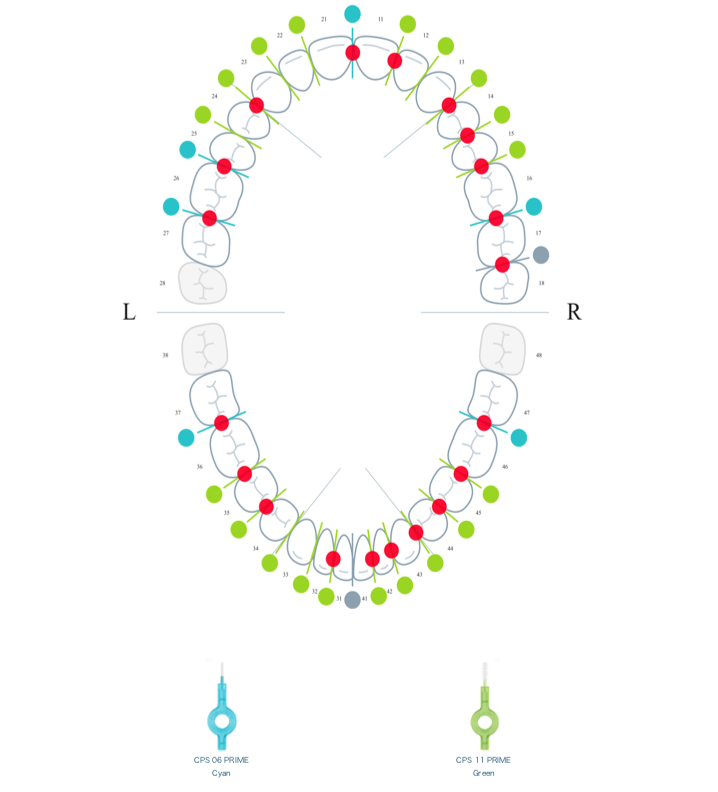
Gum disease revealed by red dots and the green/blue ones relate to the correct size Swiss Curaprox interdental brush for the gaps between my teeth
Theadora explains that successful flossing is a technique and she explains that I need to insert the interdental cleaner between my teeth at an angle – making a circular over movement for the top teeth and the reverse for the bottom ones. Using that method – rather than trying to push the brush in vertically – means that the brush is inserted at an angle so it does not bend. You then pull it downwards and move it in and out to get to all the crevices. My mouth bleeds a lot but the good news is that if I do this daily the gum disease will go away in a few weeks. The Curaprox interdental brushes can be washed and used time and time again which is also good news. But I also need a trip to the hygienist to strip away the hard plaque that is now there.
I am delighted that I have got the hang of flossing at last. I wonder why dentists don’t offer this as a paid for by patients service? I think we would all rather pay to prevent this damage to our gums which can also have other serious health repercussions, doctors have discovered.
Not surprisingly gum disease doesn’t just stay in the mouth. It can spread germs/pathogens all over the body.
Nearly half of all adults over age 30 have periodontal disease,13 which is associated with cardiovascular, lung, kidney, bone, and Alzheimer’s diseases. And it gets worse the older you get with 70% of adults aged over 65 having gum disease
Sof you really want to get rid of gum disease then you really need to learn how to floss properly. And taking an oral probiotic which restores the healthy balance of the microbiome also helps. These two have been identified by doctors: Streptococcus salivarius M18, which kills harmful oral bacteria and goes on to help rebalance the oral microbiome, andLactobacillus plantarum L-137, which boosts oral immune function and promotes healing.
What causes gum disease?
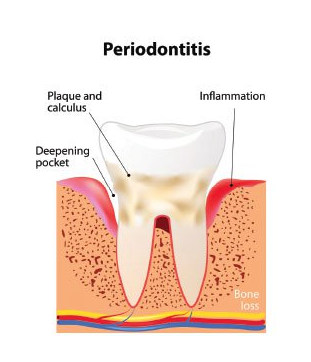
Well its not just one thing. A combination of factors including poor oral hygiene, poor diet and lifestyle factors, drugs, and disease, which upset the delicate microbiome balance. The resulting microbial imbalance known as dysbiosis—allows excessive growth of poisonous organisms in the mouth.
One of the culprits is found in food and called fermentable carbohydrate which produce lactic acid and other organic acids that promote enamel and dentine demineralisation and softening of the enamel that leads to decay. The harmful bacteria also produces a biofilm, a bit like glue that eventually becomes plaque. This it the coating that hygienists scrape off your teeth. Gingivitis happens when this plaque stimulates an immune response in the gums around the teeth causing them to become , inflamed, irritated, swollen, red and often easily bleeding. This can lead to periodontitis in which the bacteria go on to destroy the supporting structures of the teeth and can lead to tooth loss.
Is your doctor hitting the bottle – new research
A nationwide study of British employees has revealed as many as 86 percent of doctors feel pressure to get drunk, due to a “workplace drinking culture”.
Railway workers came second (82 percent), and IT workers a close third (81 percent).

Who is drinking more units than is good for their health?
Overall, almost a third of the employed Britons who took part in the study, believe they would be at a disadvantage at work if they didn’t drink alcohol, despite many wanting to cut down or stop completely.
The research revealed the extent to which employees feel they would be seen as an outcast if they didn’t drink, with almost HALF (47 percent) saying they feel real pressure to keep up with the booze culture at work.
In fact, the extent to which work based “beer pressure” is impacting our lives was revealed in the study, with 32 percent of those polled saying there is a culture of excessive drinking at their workplace.
A further 43 percent claim they actively avoid “work dos” because they know the pressure to overindulge with booze will be too much to withstand.
But one in ten Brits have stopped drinking solely to improve their work performance, and seven percent because it was having a negative impact on their ability to do their job.
The study found that a staggering 59 percent of Brits felt they had a problematic relationship with alcohol, with four in ten having felt at times that they were out of control in relation to their drinking.
Yet the pressure to drink is huge, with 43 percent of the 2,000 working Brits polled claiming they had been coerced into drinking booze on a night out by friends and colleagues, despite not wanting to indulge.
And 70 percent of people who have tried to give up booze admit they have been made to feel awkward by others if they say they are abstaining. Shockingly, the same number claim that this pressure has actually caused them to hit the bottle again.
Said Ruari Fairbairns of One Year, No Beer: “It goes without saying that the UK has a strong drinking culture and with that, peer pressure is equally strong and alive. It’s shocking that the nation’s doctors, managers and workers in big business are feeling immense pressure to drink alcohol because of the company culture. At One Year No Beer, we help companies introduce a culture change to help employees handle all occasions, whether it’s after work drinks with colleagues, or business meetings. There are always going to be obstacles when setting yourself the challenge of giving up alcohol, but it’s when you overcome these obstacles that it builds self worth, and that’s far more gratifying than having a drink.”
The average Brit thinks about giving up alcohol 25 times every year, yet only half (49 percent) have ever tried to quit.
The main reasons for going teetotal for Brits is because of worries it was affecting their health (26 percent), followed by wanting to see if they could go alcohol-free (23 percent).
One in five people tried to quit because they have had too many bad drinking experiences, and the same number because they felt they had started drinking too heavily.
And more than one in ten (13 percent) had not wanted their children to see them intoxicated.
The survey also revealed that one in ten Brits know they drink too much and yet feel completely unable to cut down. And a quarter of people (25 percent) say that they believe people in Britain drink too much.
Interestingly, the problem seems to be generational as 60 percent of 16-29-year-olds feel pressured into drinking by their work culture, compared to just 40 percent of 45-60-year-olds.
PROFESSIONS WHO FEEL THE MOST PRESSURE TO DRINK:
Doctors – 86 percent
Railway workers – 82 percent
IT workers – 81 percent
Musicians – 75 percent
Banker/ City workers – 69 percent
Scientist/ researchers – 65 percent
Actors – 64 percent
Pharmacists – 57 percent
Accountants – 52 percent
Designers – 51 percent
How to move through the menopause naturally – doctor tips
BRITTLE NAILS? BLADDER WEAKNESS? BRAIN FOG? THESE ARE LESS COMMON SYMPTOMS OF THE MENOPAUSE HOW TO MOVE THROUGH THE MENOPAUSE NATURALLY
by Dr David Edwards, Trudy Hannington, Suzie Sawyer
FACTS & STATS
Did you know there are over 30 different symptoms that can be attributed to the menopause3 from common symptoms such as hot flushes, night sweats and mood swings to the more obscure including brittle nails, bladder weakness, brain fog and even changes in body odour? This can make it difficult for women to understand what’s attributable to the menopause and what’s not.
Three quarters of women in the UK say the menopause has caused them to change their lives and 51% say menopause has affected their sex lives. A staggering 42% of women also said that menopause symptoms were much worse than they had anticipated.
Research shows that women experience the menopause in many different ways and much is influenced by their personal, family and sociocultural background. While for some women the menopause symptoms seem never ending, there are many natural solutions on offer to women that can make a really positive difference and ease the many menopause woes.
GP, Dr David Edwards, Psychosexual Therapist, Trudy Hannington and Clinical Nutritionist, Suzie Sawyer share some of their tips, bust a few myths and provide some natural and effective answers to menopause challenges.

Dr David Evans
GP, Dr David Edwards and a specialist in male and female sexual dysfunction notes: “Prescribed hormone replacement therapy (HRT) is a popular choice for women to help manage menopausal symptoms. However, there are many women who, either for medical reasons or personal choice, prefer not to take HRT. These women, or indeed those already taking HRT, may find it helpful to try the following lifestyle and supplementation tips. Most importantly, don’t suffer in silence and always consult your GP for a one to one consultation if you are at all concerned. Here are a few of my tips:
MOVE IT: Any exercise that stresses the bones such as skipping, can slow down the loss of bone density associated with the menopause. Brisk walking or aerobics release endorphins, the feel-good hormones in the body which can help alleviate low mood and anxiety, common feelings during the menopause years. Pilates and yoga6 are good for flexibility while pelvic floor exercises help protect against urinary incontinence as you age.
STAY COOL: Hot rooms can aggravate flushing so keep your house and bedroom temperature cool. Cutting back on caffeinated drinks and topping up with plenty of water may also help.
Try Herbal remedies – Traditional herbal medicines containing Black Cohosh and St John’s Wort have been clinically proven to help relieve common menopause symptoms. Some women find concentrating and copying with stressful situations particularly difficult during the menopause. Rhodiola rosea has been shown to help relieve symptoms of stress without causing sedation or a foggy brain. Make sure you choose one which carries the THR kite mark as this guarantees quality, safety and includes approved dosage information in-pack.

Psychosexual Therapist, Trudy Hannington
A leading Psychosexual Therapist, a former Chair of the College of Sexual and Relationship Therapy (COSRT) and committee member for the British society of Sexual Medicine, Trudy Hannington notes: “Female Sexual Dysfunction is a common problem that has been ignored and affects one in two women after the menopause. Most sexual problems have more than one cause. I regularly see women going through the menopause who start to experience sexual and relationship problems such as low sex drive, arousal problems and, in many cases, feelings of no longer being attractive or desirable to their partner. A few tips I have include:
Book a ‘Date Night’. Use the time to get know each other again and discuss what makes you both feel good. Switch off phones and other electronic devices so that you can give each other your full attention.
Be touchy. Improving foreplay and taking time with sensual massage can help improve communication. Kissing, touching and exploring each other’s bodies can help to boost libido.

Clinical Nutritionist, Suzie Sawyer
Clinical Nutritionist, Suzie Sawyer adds: “Diet forms the cornerstone of health. And this becomes even more important during the menopause when hormones are fluctuating. The right nutrition can have a big impact on hormonal health by nourishing and helping control and eliminate unpleasant menopausal symptoms. Here are a few of my tips to help ease some of those menopause woes:
Add soy products, rich in isoflavones to your diet. There is much research to suggest that eating whole soya foods rich in Japanese and Chinese cultures can have a positive effect on menopausal symptoms. However, products need to be made from whole soya rather than soya isolate or soya protein isolate to gain benefit from the isoflavones. Other isoflavone-rich foods include chickpeas, lentils and kidney beans.
Increase fibre intake. There are two types of fibre; insoluble found in wholegrains and vegetables which aid good bowel movements, and soluble found in oats, beans and fruit. Both are essential in the diet and especially to help with detoxifying ‘old’ oestrogens. Whilst it’s the lack of oestrogen causing menopausal symptoms, the body needs to effectively excrete those it’s utilised; eating a fibre-rich diet is the key
Protect your bones. As oestrogen levels fall, women are at risk of osteoporosis, therefore protecting your bones needs to be high on your nutritional plan. Interestingly, Public Health England recommends that everyone needs ten micrograms of vitamin D daily (our key bone-building vitamin) to help prevent vitamin D deficiency, particularly during the winter months. Taking a daily supplement is the best health insurance policy. Try Alive! Calcium with Vitamin D Soft Jells. Bones are also protected by eating isoflavones which naturally produce a metabolite with oestrogen-like activity called equol, so it’s a win-win situation!
Vitamin D11,12 and Magnesium also work together in maintaining bone health. Our skin produces most of the vitamin D we need when and if it’s exposed to sunlight, but you can also find it in oily fish, eggs and some fortified breakfast cereals. Magnesium, which aids the absorption of calcium, can be found in nuts, pulses and green, leafy vegetables. Try Alive! Ultra Women’s 50+ Wholefood Plus tablets.
Encourage production of the ‘happy hormone’! Depression is, unfortunately, a very common symptom of the menopause. The body makes serotonin, our happy hormone, from foods containing the amino acid tryptophan. The good news is that it’s widely available in a variety of foods including fish, wholegrains, soya, beans, eggs, bananas and oats, so make sure you’re eating some at every meal, if possible. Plus, if you’re having trouble sleeping, have a small tryptophan-rich snack before bedtime; serotonin also produces melatonin, our key sleep hormone.
PRODUCT RECOMMENDATIONS
Black Cohosh is found in MenoHerb Black Cohosh Menopause
Relief, a traditional herbal medicine used for the relief of menopause symptoms including hot flushes, night sweats and temporary changes in mood such as nervous irritability and restlessness, exclusively based upon long-standing use as a traditional remedy.
Available in Boots £10.20 for 30 one-a-day tablets.
MenoHerb is suitable for vegetarians and free from gluten, wheat, sugar and soya. Always read the label.
The unique combination of Black Cohosh and St John’s Wort can be found in MenoMood Menopause Mood Relief, a traditional herbal medicine used for the relief of menopause symptoms including hot flushes, night sweats, slightly low mood and mild anxiety, exclusively based upon long-standing use as a traditional remedy.
Available in Boots and Holland & Barrett and all good pharmacy and health food stores or visit www.menomood.co.uk . £16.99 for 30 one-a-day tablets.
MenoMood is suitable for vegetarians and free from gluten, wheat and soya. Always read the label.
Rhodiola rosea can be found in Vitano® Rhodiola tablets, a traditional herbal medicine used for the temporary relief of symptoms associated with stress, such as fatigue, exhaustion and mild anxiety, exclusively based upon long-standing use as a traditional remedy.
Available in Boots £6.99 for 16 two-a-day tablets.
Vitano® is suitable for vegetarians and vegans and is free from lactose, gluten, wheat, soya, corn and sugar. Always read the label.
ALIVE! Calcium with Vitamin D Soft Jells
Calcium, Vitamin D and Phosphorus for maintenance of normal bones, teeth and for normal growth and development of bone in children.
Contains a unique dried blend of 26 fruits and vegetables
Delicious strawberry natural fruit flavour: made with only natural fruit flavours
Available in Holland & Barrett £14.99 for 60 two-a-day soft jells.
Suitable for vegetarians and is free from gluten, soya, dairy, yeast, artificial flavours, colours and preservatives.
NEW ALIVE! Ultra Women’s 50+ Wholefood Plus
25 vitamins and minerals with adjusted levels to meet the needs of women over 50.
A unique dried blend of 26 whole fruits and vegetables
Daily greens blend of 14 botanicals.
A digestive enzyme blend including bromelain to help ease protein digestion
A cranberry concentrated extract for urinary tract health
Additional flax lignans with phytoestrogens for hormonal balance
Available in Holland & Barrett £24.99 for 60 one-a-day tablets.
Suitable for vegetarians and is free from gluten, soya, dairy, yeast, artificial flavours, colours and preservatives.
Unhygienic and worn out toothbrushes are a thing of the past with Ordo
A trip to the dentist can be dreaded for some, but we want you to be confident in your smile. With Ordo, you’ll be better informed and connected.
Ordo has a team of professionals who will share their top tips, passion, support and expertise with you.
And you will never be embarrassed by that worn out and unhygienic toothbrush ever again.
Fred Olsen Cruise Lines – last minute deals
From Scandinavia, Greenland, the Scottish Islands to the exotic world of the Far East & India, Fred Olsen will have a last minute deal to suit your desires and your budget here
40% of home brands at House of Fraser
Great ape bowel bacteria reveals how the human microbiome has changed
Scientists have discovered changes in the human microbiome when compared to those of our closest relatives, the Great Apes.
Scientists who examined the bacteria in chimpanzee and gorilla faeces discovered that they have seasonal changes in the type of intestinal flora brought about by the changes in their diet at different times of the year. Whereas humans are now able to source all kinds of food throughout the year which means that the intestinal flora stays the same. According to scientists, who now place increasing emphasis on the importance on the role of gut bacteria in human health this could implications for our wellbeing.

The types and numbers of bacterial species that inhabit the human gut depend on what we eat. And, as humans have changed their diet over time, the microbiome has followed suit, according to a recent study published in Nature Communications.
The Western diet, in particular, is wholly different to that of our ancestors just 100 years ago — let alone early humans who walked the earth millions of years ago.
The human digestive system, though it does have differences from our closest relatives — the other great apes — is relatively similar. And, when our species first split and went off on our own evolutionary path, our diets probably had a lot in common, too.This means that the bacteria types living in our gut were, at least initially, pretty similar to our hairier cousins. There are still similarities today, but, as our diet has shifted, so has our microbiome.What this huge change in our diet means for our microbiome and related health is a tricky question to answer.
Researchers at the Center for Infection and Immunity at Columbia University’s Mailman School of Public Health in New York City, NY, investigated ape bowel waste. Specifically, they examined fecal samples from great apes living in the Sangha region of the Republic of Congo, collected by the Wildlife Conservation Society.
Their sampling was spread over three years, in order to give them an idea of how gut bacteria populations shifted seasonally.
The authors noted that, in chimpanzees and gorillas, the microbiome changed significantly with the seasons, along with their diet. In the hot, dry summer, for instance, fruits are their primary food source, whereas for the rest of the year, their diet is mostly fibrous leaves and bark.
Brent L. Williams, Ph.D., an assistant professor of epidemiology, explains one of the primary changes they evidenced: “Bacteria that help gorillas break down fibrous plants,” he says, “are replaced once a year by another group of bacteria that feed on the mucous layer in their gut during the months they are eating fruits.”
Interestingly, the changes mirrored those of the Hadza hunter-gatherer people from Tanzania, who similarly rely on seasonal food availability.
In contrast, as far as the average U.S. citizen’s microbiome is concerned, seasonal changes do not occur. We can access pretty much any food type we want at any point in the year.
The team noted other differences, too. According to first study author Allison L. Hicks, “While our human genomes share a great deal of similarity with those of our closest living relatives, our second genome (the microbiome) has some important distinctions, including reduced diversity and the absence of bacteria and archaea that appear to be important for fibre fermentation.” Do these differences matter to our health?
“The fact that our microbiomes are so different from our nearest living evolutionary relatives says something about how much we’ve changed our diets, consuming more protein and animal fat at the expense of fibre,” says Williams.
As mentioned earlier, during the fibre-poor summer months, the microbiome of the great ape is dominated by a strain that feeds on the gut’s mucous layer.”Many humans may be living in a constant state of fibre deficiency. Such a state may be promoting the growth of bacteria that degrade our protective mucous layer, which may have implications for intestinal inflammation, even colon cancer.”
As Hicks says, “Understanding how these lost microbes influence health and disease will be an important area for future studies.”
A positive outlook on life helps brain function in later life, new research reveals.
Researchers have found that pensioners aged between 80 and 100 who have a positive outlook on life can enjoy better cognitive function that people in their fifties.
Medical experts were stunned when they carried out research on ‘super-agers’, who despite having many symptoms associated with dementia, seemed not to be affected by the condition.
In spite of the fact many of the super-agers had unhealthy habits including smoking and drinking, researchers found what they had in common was a positive attitude in life and an unusually high proportion of the rare brain called called the von Economo neuron.
Professor Emily Rogalski, of the Northwestern University in Chicago, examined the brains of 10 super-agers who underwent examination while they were alive and after they had died. They were part of a group of 74 super-agers followed by the research.
Rogalski said in a paper she is presenting to the American Association for the Advancement of Science she is presenting today: “The findings suggest that super-agers have unique personality profiles.Excellent memory capacity is biologically possible in late life and can be maintained for years even when there is significant neuropathologic burden.'”
Her research found that 71 per cent of super-agers smoked and 83 per cent drank alcohol regularly. However Rogalski estimated that less than five per cent of the population are super-agers.
The von Economo neurons which were present in super-agers are only found in the brains of large mammals and are believed to offer highspeed connections between different regions within the brain. They are known to develop in the late stages of pregnancy and early childhood and could be down to luck.
Rogalski’s study could provide a breakthrough in dementia research. In contrast to much of the dementia research carried out to date, it does not focus on trying to reverse the spread of amyloid and tau, deformed proteins that form lumps in the brains of people with dementia.
Celebrity Crimper Neil Moodie answers your questions about thinning hair
Image result for woman playing with Celebrity hairstylist and Viviscal Ambassador Neil Moodie, who has styled the likes of Kate Moss and Cara Delevingne, answers some of the most frequently asked questions stylists get asked about thinning hair.

Why can hair thin with age?
Neil: Hair is made up of many protein strands. The life span of a hair strand is anything between 2 to 7 years. Your genes determine a lot about how much hair we have on our heads and bodies.
As we age, hair strands become smaller and lose their pigment, some stands just don’t grow anymore and so our hair becomes thinner. Each strand of hair you have sits in a tiny cavity called a follicle. When the hair follicle shrinks over time this results in shorter and finer hair. Eventually the follicle doesn’t grow new hair. This doesn’t mean the follicle isn’t live though which suggests that it is still possible to grow new hair.
What’s the best way to cut thin hair?
Neil: In general if you have finer hair, don’t grow it long. The longer it gets, the weaker the hair gets and so it can tend to look lank and straggly on the ends. There’s nothing worse than long hair that doesn’t look healthy. I would be inclined to say to people with fine or thin hair to keep it shorter in length.
For those that have super thin hair you want to get layers in to get a bit more height and volume in the hair as opposed to the hair being all one length. I wouldn’t recommend really short layers because that can highlight the fineness of the hair. Personally I would recommend hair to be bob length or shorter and then to have some layers – the length of the layers would depend on what your hair is like. Ask your hair stylist – they’ll know best.
How can I style thin hair to make it look thicker?
Neil: Styling wise it really depends on what products you use and how you style it. Getting root lift will make hair look thicker rather than having it lying flat against the head. To get root lift that lasts using the correct tools and styling products is essential. There’s a lot of thickening hair products around and plenty to choose from. The Windle & Moodie Fortifying Spray is great for hair that’s not super thin but needs a bit of a boost as it’s a lighter thickening spray which has a little bit of hold. I recommend using Windle and Moodie Foundation Spray that acts as a detangler first as this will help distribute the thickening spray through the hair more evenly.
Is colouring bad for thin hair?
Neil: There is often the misconception that colouring is bad for your hair however I think that colouring is so sophisticated now that if it’s done right then I don’t think it is bad for your hair. Colour is good for making each individual hair shaft swell and make it feel a bit thicker. Having said that you have to be careful with colour as the finer the hair, the more delicate it is. If you want to start colouring your hair it’s good to start with a healthy base. I wouldn’t recommend starting colouring your hair when it’s already damaged as this is not going to help matters. Take Viviscal supplements for a few months before you plan to colour it to give your hair a boost and get it back to a healthy state.
In general colouring your hair these days is a lot better for your hair than it used to be however I’m not a fan of home colouring. My concern is that people don’t know what they’re doing and might for example put blonde on top of a dark colour not realising that this won’t work. It is a science. There are chemicals involved and colourists are rigorously trained to use those chemicals. Someone who’s worried about the condition of their hair is best off to go into a salon and get some professional advice to guide them in the right direction.
What products do you recommend for thinning hair?
Neil: The first thing I recommend to the models I work with is Viviscal, which contains biotin, zinc, a marine-based complex that promotes hair growth. This will get the nutrients working from the inside out and that’s the most important thing for getting the hair back on track. I always notice much healthier hair growth after women take Viviscal and I often see a slight increase in speed of hair growth, and reduction in shedding. If your hair’s really thin, try the Windle & Moodie Thickening Cream, which is a more heavy duty cream to make thinner hair feel fuller. Clients get excited when I use the product on them as the results are so good. I used it on a model the other day and she said that it made her feel like she had extensions in.
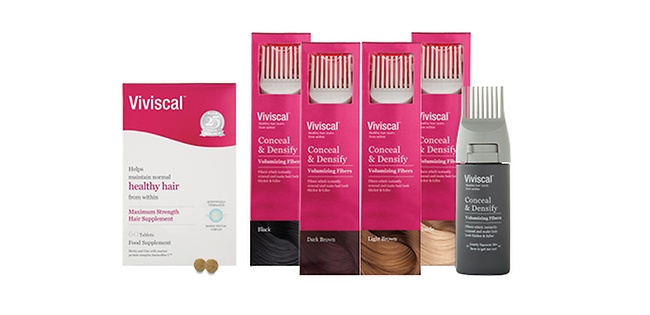
Neil is bla bla
A warm welcome, great food and gossip – a perfect lunch at Mr Hanbury’s Mason Arms
Whether its accommodation or food I have discovered there is nothing like a quintessential English pub – and by that, I mean a pub that manages to balance local traditions of real ales but is also passionate about delivering a great dining experience and value-for-money.

One such place is the Mason’s Arms in Oxfordshire which also has rooms and is part of an embryonic chain of innovative pub restaurants. It was fairly easy to find in the middle of the countryside at least with a satnav. After turning off the M40 and taking the A40 towards Oxford I skirt round the city and head towards Gloucester. About 10 miles on I take a left down a lane leading to the village of South Leigh, just south of Witney and I soon see the thatched roof of the 16th century limestone inn called Mr Hanbury’s Mason Arms peeping over a wall.

Mr Hambury’s main restaurant
The car park looks busy even around 2ish on a weekday so I take this as a good sign. I am a little late for my reservation (accident on M40) so they have put me on a lovely little table in the bar and given me a very warm welcome nevertheless. My table is outside the main restaurant but I am glad as there are some very rowdy fellows in there downing port. And it seems I am in pole position to hear the pub gossip, not far from the huge roaring fire – lovely and comforting on this cold wintry day.
So, glass of Rioja in hand I chose my food from the menu: a starter of smoked ham hock terrine, black pudding, pickles and garden herbs (£8); a main course of 32-day aged rump steak, roasted onion and bone marrow sauce, triple cooked chips (£25) and the irresistible sounding Blood Orange Cheesecake (£7) and to drink mineral water. There is also a Garden Menu which I suppose counts as the menu du jour with 2 courses for £20 or 3 courses for £25
I note the very large pink neon sign over the fireplace that reads “What Did I Do Last Night?”. Hmm I think that is a bit unusual in a village pub! but apparently its part of the owners’ desire to make their offering a little bit different – decadent I suppose!

A neon reminder to behave yourself …or not!
With nothing else to do while waiting for my meal I sit and take in my surroundings. At the next table is an elderly and clearly well-heeled American man – kitted out English gent style in an expensive Saville Row tweedy country jacket and silk socks – who is conversing with a local. Although they are two tables away I easily overhear the conversation. The American is, he says, over on a regular jaunt to the Cotswolds and reveals that he frequently dines with “The Duke” and his wife while he is in the area. I don’t know any Duke’s personally but I do know there is only one of note around these parts and that’s the Duke of Marlborough of Blenheim Palace fame – Jamie Blandford as was. Enough said and my starter arrives. The American leaves – his chauffeur is outside luckily as he has been trying out the Malts and my first course arrives.
The food at The Mason’s Arms is a proverbial feast for the eyes. Beautifully presented with herbs from the kitchen garden, meat sourced locally etc. My starter did not disappoint although I could not get visability o the black pudding but I am sure it was there! The main of rump was perfectly medium done and the flavour not spoiled by the burnt taint of a flame grill as so many steaks are these days. The piste de resistance though was the desert. This is not something I would usually order as I am usually too full but my love of Sicilian blood oranges got the better of me…. these oranges develop their distinct colour/flavour as a result of the change of temperatures which can drop to freezing on the slopes around the volcano of Mount Etna even in summer.
The eatery and hotel in East Leigh is the fourth venture for owners Justin and Charlotte Salisbury who launched their brand Artist Residence in 2008 in rather more racy places such as Brighton, Penzance and London’s Pimlico with another planned for Bristol this year.
The reason the food is so good at the Mason’s is down to chef Leon Smith who has a Michelin-starred background including working for Tom Aikens and Wild Honey in London and the Pony & Trap in Bristol. He is passionate about using the freshest locally sourced ingredients. Many of the vegetables in particular come from the pub’s kitchen garden

Leon pictured left in the organic garden at Mr Hanbury’s
All in all, it was a perfect lunch with a warm welcome, great food and some entertainment for a lone but not lonely eater. Sadly, I was not able to stay as all the bedrooms were booked!
Fact Box
Mason’s Arms, Station Road, South Leigh, Oxfordshire OX29 6XN
T: 01993 656238
Rooms: Doubles from £130, B&B
Wifi: free
Parking: on site car park, free of charge
Pets: £20 charge per dog, per night. Dog bowl and treats included
Get a fresh look in 2018 – shop the Benefit cosmetics sale
Benefit is known for creating innovative products that work with the latest trends and fashion and not just for younger age ranges.
A subtle change to your make up – such as foundation colour, lipstick and eyebrow definition can take whittle away the years and give you a refreshing new look.
Why not try something new especially since many products are now 50% off!
At last Benefit has launched is new volumising brow gel in the UK – Gimme Brow – our absolute favourite product
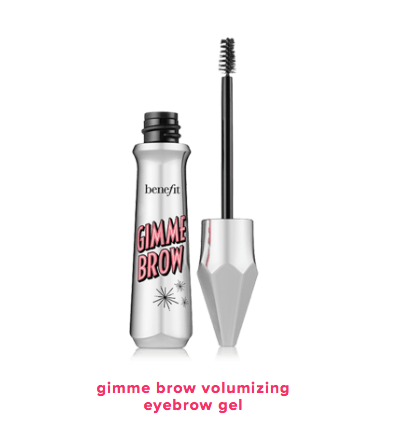
We love these products as they give you great natural looking brows – Gimme Brow is £23.50
How to repair thin & skimpy eyebrows – tips from Benefit Cosmetics
This video from Benefit shows you how to get eyebrows with volume – without looking scary.
We have sourced discounts on two of the products at House of Fraser in the images below which are actually cheaper. Unfortunately the Gimme Brow product is not available here in the UK until the New Year – so not long to wait!!
Click here to find out more on Benefit’s website
Explore Prague’s famous Christmas Market – from only €115 for two
Prague’s Christmas markets are internationally renowned for their festive atmosphere, food and drink and sheer range of products. What better way to celebrate the festive season than perusing the stalls and picking up some unique gifts with a glass of mulled wine in hand? Stay with at the luxury Corinthia Hotel & Spa and enjoy transport to the markets, plus bed and breakfast in the beautiful Corinthia Prague from just €115
PACKAGE INCLUDES
- Accommodation in a room of your choice (up to 2 guests)
- Buffet Breakfast
- Daily tickets for Prague’s transport system (1 per person/night of stay)
- Map of Prague’s Christmas markets
- Typical Czech Vánočka bread
- Unlimited access to the Apollo Day Spa
TERMS AND CONDITIONS
- Package is bookable until 24/12/2017
- Package is valid for stays 1/12/2017 to 28/12/2017 inclusive
- Offer is subject to availability and blackout dates may apply
- Minimum 2 nights stay restriction applies
- Reservations must be made at least 3 days prior to arrival
- Reservations can be cancelled free of charge up to 3 days prior to arrival
- Reservations must be guaranteed by a credit card at the time of booking
Living DNA – find out where you really come from £99 instead of £120
What you get
Living DNA is able to show you your ancestry in twice the detail of other tests. This is possible because of the scientific teams we work with, and the detailed ways in which they can explore your DNA. You can view your results online or in a personalised book, and this allows you to explore your DNA breakdown today, as well as the migration patterns of your ancestors dating back 80,000 years. Click here to find out more.
Spa & Sun in Malta – 25% off at the luxurious Corinthia Palace
Featured

Corinthia Hotel & Spa MalStay in the tranquil surroundings of Corinthia Palace Hotel & Spa with 25% off when you book now. You’ll enjoy savings on accommodation, and all the benefits of Corinthia hospitality including access to our spa facilities, bathrobes, slippers and more.
YOUR EXPERIENCE INCLUDES:
Luxurious accommodation
Full use of the Spa facilities, indoor pool, fitness centre and sauna gardens
Complimentary Wi-Fi



TERMS AND CONDITIONS
Rates are based on two guests sharing one bedroom
Rates include tax and are offered subject to availability
Blackout periods may apply
No refund can be given for unused services
Cancellation policy: free up until 6pm one day prior to arrival
Reservation must be guaranteed to a credit card at the time of booking
Late cancellations and no- shows may incur a charge
Tuscan White Bean Stew
This delicious and easy recipe is also very cheap. It serves 6.

A hearty, nutritious meal as temperatures drop!
For the croutons
• 1 tablespoon extra-virgin olive oil
• 2 cloves garlic, quartered
• 1 slice whole-grain bread, cut into 1/2-inch cubes
The stew
• 2 cups dried cannellini or other white beans, picked over and rinsed, soaked overnight, and drained
• 6 cups water
• 1 teaspoon salt
• 1 bay leaf
• 2 tablespoons olive oil
• 1 yellow onion, coarsely chopped
• 3 carrots, peeled and coarsely chopped
• 6 cloves garlic, chopped
• 1/4 teaspoon freshly ground black pepper
• 1 tablespoon chopped fresh rosemary, plus 6 sprigs
• 1 1/2 cups vegetable stock or broth
Recipe
To make the croutons, heat the olive oil over medium heat in a large frying pan. Add the garlic and saute for 1 minute. Remove from the heat and let stand for 10 minutes to infuse the garlic flavor into the oil. Remove the garlic pieces and discard. Return the pan to medium heat. Add the bread cubes and saute, stirring frequently, until lightly browned, 3 to 5 minutes. Transfer to a small bowl and set aside.
In a soup pot over high heat, combine the white beans, water, 1/2 teaspoon of the salt and the bay leaf. Bring to a boil over high heat. Reduce the heat to low, cover partially and simmer until the beans are tender, 60 to 75 minutes. Drain the beans, reserving 1/2 cup of the cooking liquid. Discard the bay leaf. Place the cooked beans into a large bowl and save the cooking pot for later use.
In a small bowl, combine the reserved cooking liquid and 1/2 cup of the cooked beans. Mash with a fork to form a paste. Stir the bean paste into the cooked beans.
Return the cooking pot to the stove top and add the olive oil. Heat over medium-high heat. Stir in the onion and carrots and saute until the carrots are tender-crisp, 6 to 7 minutes. Stir in the garlic and cook until softened, about 1 minute. Stir in the remaining 1/2 teaspoon salt, the pepper, chopped rosemary, bean mixture and stock. Bring to a boil, then reduce the heat to low and simmer until the stew is heated through, about 5 minutes.
Ladle the stew into warmed bowls and sprinkle with the croutons. Garnish each bowl with a rosemary sprig and serve immediately.

Skipping breakfast does not cause overeating, new research reveals
Eating breakfast is supposed to lead to less calorie consumption during the day. But new research suggest that skipping breakfast may not cause us to overeat later.
Juggling the demands of modern life can leave little time for breakfast, despite it being hailed as the most important meal of the day. But contrary to previous research, a new study suggests that skipping breakfast may not necessarily cause us to eat more later on.
 The study, which involved 40 teenage girls, found that participants consumed more than 350 fewer calories on days when they missed breakfast, compared with the days when they ate breakfast.
The study, which involved 40 teenage girls, found that participants consumed more than 350 fewer calories on days when they missed breakfast, compared with the days when they ate breakfast.
Lead study author Dr. Julia Zakrzewski-Fruer, of the University of Bedfordshire in the United Kingdom, and colleagues say that their results challenge previous research suggesting that skipping breakfast may lead to overeating later in the day.
The researchers recently reported their findings in the British Journal of Nutrition.
For many, having breakfast is a major part of our daily routine. For others, those extra few minutes in bed are preferable to a slice of toast or a bowl of cereal. In fact, a 2015 survey found that only 47 percent of people in the United States eat breakfast every day.
But what effect does skipping breakfast have on our health? Previous research has linked breakfast omission to poorer heart health, while other studies have suggested that missing a morning meal may lead to overeating and increase a person’s risk of obesity.
For this latest study, Dr. Zakrzewski-Fruer and colleagues sought to find out more about the latter.
Fewer calories eaten after skipping breakfast
The study included 40 girls aged 11–15 years. Each subject was required to participate in two 3-day breakfast conditions. In one condition, participants consumed a standard, low glycemic index (GI) breakfast, which contained 468 calories. In the other condition, participants did not eat breakfast.
Dr. Zakrzewski-Fruet and team say that the aim of their research was to “examine the effect of 3 consecutive days of breakfast consumption compared with breakfast omission on free-living energy intake and physical activity in adolescent girls.”
As part of the study, each participant was required to keep a food diary, and their physical activity levels were monitored with an accelerometer.
The researchers found that on days when participants missed breakfast, they consumed a total of 353 fewer calories than on days when they ate breakfast.
Breakfast consumption appeared to have no influence on physical activity levels, the team reports.
“There are many reports,” says study co-author Dr. Keith Tolfrey, of Loughborough University said that show missing breakfast is associated with obesity, which may have led to premature assumptions that breakfast can be used as an intervention for weight control.
He adds: “But we do not know why eating breakfast is associated with a lower likelihood of being overweight or obese, or whether eating breakfast can be used effectively as a weight control strategy.”
Onion juice may be helpful in hairloss
Hair loss is very common and may involve bald patches, complete baldness or gradual thinning. It can get worse as we age with changes in hormones.
Onion juice may be able to help because:
-
- Onions contain certain minerals, which may be good for the hair
- Anyone allergic to onions should not use onion juice on their hair
- If the smell is too much to stand, adding a little lemon juice or rose water helps
- Although a popular home remedy, more research is needed to conclude if onion juice works as a hair loss treatment
Hair loss causes
Hair loss and hair thinning is a common problem, and many seek natural treatments to encourage hair growth. Onion juice is one possible treatment.
The most common cause of hair thinning or loss is a hereditary condition called androgenetic alopecia. Others reasons hair loss can develop include certain medical conditions, as a side effect of some medications, and hormonal changes.
Regardless of the cause, many people want to do what they can to regrow their hair and prevent further loss, and there are some medications that can be used to treat hair loss. One home remedy many people may not have heard of is onion juice.

Does onion juice work for hair regrowth?
The use of onion juice for hair regrowth has not been extensively researched. But one small study recently published in the Journal of Dermatology indicated that applying onion juice to the scalp might help hair regrow in some people.
The study involved participants who had alopecia areata, which is a non-scarring, patchy form of hair loss. Researchers found that hair growth started after 2 weeks of using onion juice, which was applied to the scalp twice daily.
Almost 74 percent of participants had some hair regrowth after 4 weeks, and at 6 weeks about 87 percent experienced hair regrowth. Both males and females participated in the study and the hair regrowth was higher among males. Although the study did indicate positive results, it was small with only 38 participants.
How onion juice may help hair
Onions have many potential health benefits. Onion juice may help to encourage the growth of thick, healthy hair.Nutrients in the onion juice applied to the hair may nourish the hair follicles, which might increase volume, shine, and improve hair strength. The extra nutrition may also minimize breakages and thinning.As well as conditioning, using onion juice may also promote new hair growth in some people.
The reason onion juice may help improve the health of the hair may be due to the following:
- Dietary sulphur
Sulphur is one of the most common minerals in the body. It is needed for adequate production of enzymes and proteins. Sulfur is also found in keratin, which is one of the components of hair.
The sulphur in onion juice may provide the hair with the nourishment it needs to grow. It may also increase the growing phase of the hair.
- Anti-microbial properties
Onions have anti-bacterial properties, which may help fight scalp infections.In some cases, a scalp infection can contribute to hair loss. A healthy scalp is more likely to have strong hair follicles.
- Antioxidants
Onions contain antioxidants, such as flavonoids. Antioxidants are believed to protect the body from free radicals.Free radicals are thought to contribute to the aging process. For example, free radicals may destroy the hair follicles and lead to thinning and loss of the hair. Cancelling out or decreasing free radicals may reduce damage to the hair follicles.
How to apply onion juice to the hair
For those who want to try using onion juice to improve hair health or promote regrowth, the process is simple.
To make onion juice, people should follow these steps:
- Peel about four onions and chop them into small pieces.
- Extract the juice out of the onion by either squeezing it or using a juicer.
- Another option is placing the onion pieces into a blender and blending into a paste.
- Place the paste in cheesecloth and squeeze all the juice out.
- Apply the juice to the scalp or the hair roots.
- A few drops of essential oil may also help decrease the potent odor of the juice. Peppermint, lavender, and rosemary essential oils can be good options to dilute the smell.
Currently, there are no commercial products, such as shampoos, that contain onion juice.
However, commercially prepared onion juice and onion liquid extract are available for those who do not want to make their own.
Are there any side effects?
Test the onion juice on a small patch of skin before applying it to the scalp, to ensure that an allergic reaction does not occur. Even though the onions are not being eaten, contact with the skin can cause symptoms in people who are allergic. Onion juice can also be irritating to the skin among people who are not allergic, causing redness and itching.To be sure that onion juice does not cause significant irritation, doing a patch test before applying the liquid to the whole scalp may be useful.
To do this, a person can apply a small amount of onion juice to the inner elbow or back of the ear and wait a few minutes. If irritation develops, it is best not to apply the juice to the scalp.
It is also important to avoid getting onion juice in the eyes. Onion juice that drips into the eyes can lead to burning and redness.
If onion juice does get into the eyes, it is important to rinse it away with cool water Although it is not a harmful side effect, onion juice can have a very strong smell.
The odour may dissuade some people from continuing with onion juice treatment, as it must be applied every day to have the best chance of being effective.
Verdict
Some people might have success using onion juice for hair regrowth or conditioning while others will not.
Also, the use of onion juice is not going to grow hair quickly. It takes a commitment to applying the onion juice twice daily over the course of several weeks to see if positive results can be achieved.
Studies are limited, so it is not clear that hair growth will continue or if the hair will return to its original state if the use of onion juice is stopped.
The bottom-line is that the use of onion juice, as a hair treatment, is probably not a miracle cure for hair loss. However, it does appear to be safe for most people if they are not allergic to onions.
Side effects also appear to be minimal. It is also fairly easy and not too costly to make an onion juice rinse for the hair.
Even if the use of onion juice does not produce a full head of hair, it probably will not damage existing hair.
So, for some people with hair loss, the use of onion juice may be a possible natural remedy that is worth a try.
Poor sense of smell may be predictor of Alzheimer’s and early death?
In a study that followed almost 3,000 older people with normal cognition, researchers found that a simple smell test was able to identify those at higher risk of dementia, according to new research published in the Journal of the American Geriatrics Society.
They found that participants who could not identify at least 4 out of 5 odours in the simple smell test were twice as likely to have dementia 5 years later.
“These results show that the sense of smell is closely connected with brain function and health,” says Prof. Jayant Pinto, who is also an ear, nose, and throat specialist.
He explains that losing one’s sense of smell is a strong indicator of “significant damage,” and that this “simple smell test could provide a quick and inexpensive way to identify those who are already at high risk.”
Dementia is a collection of diseases
Dementia is a progressive brain disorder that erodes many aspects of cognitive function – for instance, it diminishes a person’s ability to remember, reason, solve problems, and hold a conversation.
As it progresses, dementia encroaches on daily life, eventually robbing people of their independence and personality.
Memory loss is not the only sign of dementia; many people can experience it without having dementia. Dementia is not a normal part of aging, although it is much more common in older people. To be diagnosed with dementia, a person must show impairment in two or more core mental functions, of which memory can be one.
Dementia is not one disease, but a collective term for several diseases that affect the brain. Alzheimer’s disease is the most common type of dementia, but other types include vascular dementia, Lewy body dementia, and frontotemporal disorders. It is quite common for people to have more than one type.
The number of people worldwide with dementia is growing. Currently, around 47 million people are thought to be living with the disease. This number is likely to approach 75 million by 2030 and 132 million by 2050.
At present, there are no treatments that can cure dementia or alter its course, but there are some in clinical trials that might have an impact. In the meantime, much can be done to improve the quality of life for people with dementia, as well as the people who love them and care for them. In this respect, early diagnosis is essential.
Smell test
Humans sense smell through the olfactory nerve, which links the cells that detect odours in the nose directly to the olfactory bulb located at the base of the brain. This is the only cranial nerve exposed to the outside world, offering a potential route through which the central nervous system might be harmed by pollution, pathogens, and other hazards in the environment. The olfactory system has self-generating stem cells and the researchers suggest that perhaps loss of sense of smell is an early sign that the brain is losing its ability to self-repair. Loss of sense of smell is often an early indicator of Alzheimer’s and Parkinson’s disease.
In the new study, a “nationally representative sample” of 2,906 men and women aged between 57 and 85 underwent home interviews and completed a simple smell test.
Alzheimer’s disease: Scientists close in on how it starts and how to stop it
Learn about a sequence of events involving immune cells and proteins that become abnormal in Alzheimer’s disease.
For the “validated five-item test,” they had to identify five odors, one at a time, by sniffing a device similar to a felt-tip pen. Each time, they were given four choices, from which they had to pick out the correct one.
The five different odours were: peppermint, fish, orange, rose, and leather, with peppermint being the easiest, and leather the hardest, to identify.
The researchers found that the vast majority of participants were able to correctly identify at least 4 out of 5 odors. Of the rest, 7 percent identified 2 or 3 out of 5 smells, 2.2 percent identified just one, and 1 percent could not identify any of them.
‘Important early sign’ of dementia
After 5 years, the participants were interviewed again to find out if they had been diagnosed with dementia. A proxy stood in if the participant was too sick to be interviewed or had died during the follow-up.
The team analysed the results of the smell test against the follow-up information, adjusting them to rule out any effects from age, sex, race, ethnicity, education, other illnesses, and level of cognition at study baseline.
They found that the participants who had not been able to identify at least 4 out of the 5 odours at baseline were more than twice as likely to be among those who had developed dementia during the 5-year follow-up.
They also found that the lower the number of odors correctly detected at baseline, the higher the chances of dementia being diagnosed during the follow-up period.
On the findings, Prof. Pinto says, “We think a decline in the ability to smell, specifically, but also sensory function more broadly, may be an important early sign, marking people at greater risk for dementia.”
In a linked editorial, Dr. Stephen Thielke – from the Psychiatry and Behavioral Sciences Faculty at the University of Washington in Seattle – acknowledges that problems with sense of smell may be “easier to quantify across time than global cognition,” and that this could make it easier to assess early decline in the brain.
However, Dr. Thielke also notes that this does not mean that “smell testing would be a useful tool for predicting the onset of dementia.”
Prof. Pinto accepts this point, noting, “Our test simply marks someone for closer attention.” He and his colleagues say that more work is now needed to turn the test into one that can be used in clinical practice.
Nevertheless, he believes that the test could help to find patients who might be at higher risk for dementia, who can then be put forward for trials of treatments to prevent dementia in the early stages.
“Of all human senses, smell is the most undervalued and underappreciated – until it’s gone,” said Prof. Pinto






